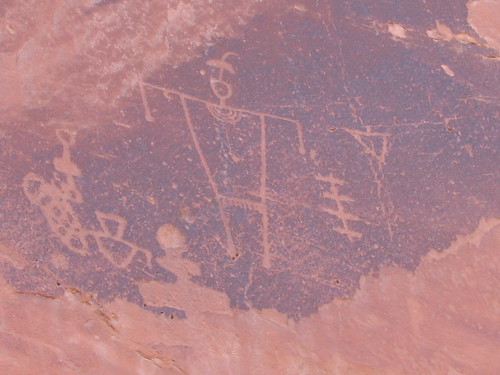Imagining something like 9/11 wasn’t failure of preparation, it was a failure of imagination.
– Paraphrasing of Diana paraphrasing Donald Rumsfeld paraphrasing someone Diana couldn’t remember, but the sentiment stands.
The Building History Project was pretty imaginative. Changing up the way my students complete 2fers and revise using Google Docs felt like imagination. The free choice in reading and accompanying structures of learning about my students’ reading skills and preferences strikes me as a creative remix of some old ideas.
Still, I’m me. Just me.
My ideas are going to seem stymied compared to the collaborative creativity of students who have far fewer years of being told they can’t do something.
For the past few days, we’ve picked up on the collaboration we started with Jabiz Raisdana last week.
My role has been minimal. Halfway through a class period, I played Jabiz’s song composed of the students’ responses to his Flickr set. Then, I played Bryan’s. Then I played Noise Professor’s. Then, I read this message Jabiz sent my students through the collaborator e-mail function of the shared google doc we’ve created to track the project:

Then I said, “Ok, what do you want to create?”
The ideas broke down into four basic groups: music, text, photos, film. Still, I was worried that might be too limiting, so I asked if anyone wanted to do something else. A few hands were raised, so “Something Else” became the fifth group.
After a brief show-of-hands poll asking who was interested in participating in each of the groups and telling them to take note of who else was raising their hands, I gave the key instruction: Ok, create something.
And they grouped up. They were lying on the ground, sitting around tables, sitting on the window sill, discussing how to make something that didn’t exist yet. No one asked how long it had to be or when it was due. I’m not anticipating either of those pieces being problems.
I sat in on a few groups.
In one music group, they’re planning on recoding Jabiz’s original song. Newon asked, “Mr. Chase, can you e-mail Jabiz and ask him for the chords from his song?”
If I’d designed what they’re doing, I’d never have imagined asking for chords. I probably would have limited the groups to four as well. Voices would have been silenced.
I showed Newon how to find Jabiz’s e-mail address in the google doc and message him.
Checking e-mail after school, I found this:

None of my state standards, call for me to have one of my students in Philly e-mail a teacher in Jakarta to get the chord progression for the song he wrote based off of my students’ poetry, but I’m going to stick to my guns and say the learning’s still valid.
Eventually, I wandered over to the Something Else kids.
Tim said he was working on a way to create a piece of sculpture inspire by and including Jabiz’s photos and the photos coming out of the photography group. He was doodling on the dry erase tables to show his friend TJ what was flitting around in his imagination.
Ian told me he wanted to create a piece of art incorporating the original lyrics and inspired by Noise Professor’s mix of the song.
At that point, a music group checked in to say they were going back to the original comments to add lyrics to their version of the song.
Meanwhile, Luna decided to create a space to hold all of the creations and asked if she could be the webmistress.
Sure.
Then she named the project – Stones.
She ran it by the class who had no problem with it, and Jeff came over from the photo group to make sure they could embed their posterous account on the page.
And I checked in, and watched.
I asked questions and offered ideas.
Some were answered and accepted. Some were ignored. I took no offense.
Creation’s a great way to wrap up a Friday. Sure, we took vocab quizzes and edited analytical essays and read books. By the end of the period, though, we balanced it with creativity.
Rumsfeld and Diana would be happy. And you have no idea how difficult it is to please both of those two people at the same time.
Like this:
Like Loading...

